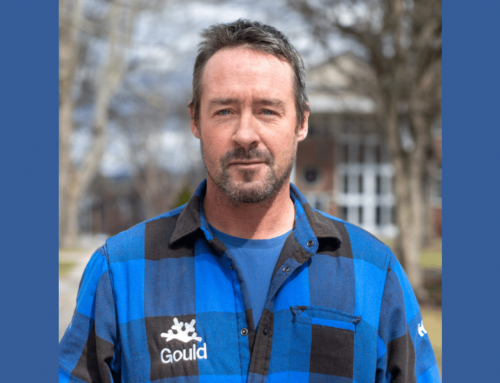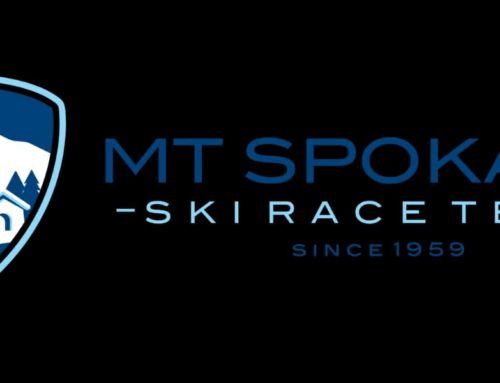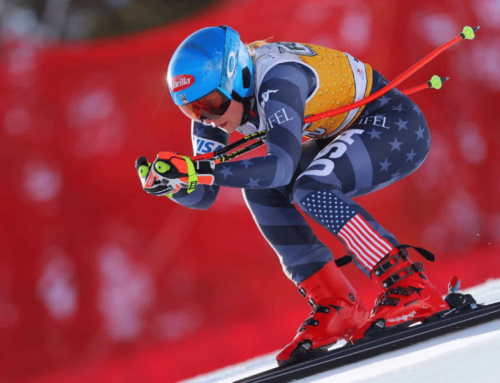Strengthen Your Mental Muscles in the Gym This Summer
When you read the title of this week’s post, you’re probably wondering what the heck I’m talking about. You condition your body in the gym, not your mind, right? Well, yes, the gym is where you get your body stronger with hang cleans, squats, bench, core, and many other strength exercises.
But here’s the really cool thing: You can also use the gym to get your mental muscles really strong for next season as well, and in ways not so different than how you train your body.
Most sport psychologists work with athletes on the mental side of their sport in an office setting (usually one hour per week), providing them with mental tools that they can use during training and races. This approach makes about as much sense as a coach offering their racers technical instruction in an office and then telling them to go out on the hill and work on it in training. In either case, the transfer from inside to outside isn’t very good.
I have found the most productive work I do with racers is on the hill. Because of my ski racing background and knowledge of the sport, I’m able to go on the hill with racers and show them how to incorporate mental training, such as intensity, focus, imagery, and routines, while they’re actually skiing, first while free skiing and then in gates.
But, over the last few years, I have discovered an even better setting in which racers can begin to get their mind into shape: the gym. Yes, using mental training while doing strength, agility, or mobility training (the three most common types of conditioning for alpine ski racers) is a great way to begin to strengthen your mental muscles and develop a mental toolbox that will be of such benefit once you get on snow.
The foundation of this idea that mental training begins in the gym is that the mind is made up of muscles that only get stronger with exercise and repetition. Further, your ultimate goal in all of your training, whether physical, technical, tactical, or mental, is to deeply ingrain effective habits that you can use on race day to ski your fastest.
A great thing about beginning your mental training in the gym is that it is a much less complex environment than on snow and, as a result, easier to focus on and start to strengthen your mental muscles. You have fewer variables, fewer things to think about, and, importantly, fewer distractions (e.g., ruts, terrain, weather) that can prevent you from focusing on and developing those mental muscles.
If you compare of run of gates and a set of a strength exercise, you’ll see that they have a lot in common. Both a run of, say, slalom and a set of squats are physical performances that share many attributes. They both involve strength and technique. They hurt at the end. And, most importantly, they require certain mental capabilities to maximize the gains you make from them.
Training runs and conditioning exercises also have similar phases of execution. There is the preparation phase where you get yourself physically and mentally ready to perform your best. There is the performance phase where you are doing your best to perform at your highest level possible. There is the conclusion phase where you are in pain and your body is telling your mind (often in a very loud voice!) to either ease up or stop because it hurts too much. Finally, there is the completion phase where you evaluate your performance and see what you can do to improve.
Everything mentally that you need to have and do for a great training or race run also applies to every set of a workout:
- You must be highly motivated to give your best effort even when you get tired, bored, or begin to really hurt.
- You have to have confidence that you can, for example, lift a certain weight or do a particular number of reps.
- You must have the physical intensity necessary to explode upward with the weight.
- You have to be focused on good technique so you execute properly and don’t risk injury.
- You need an aggressive mindset to attack the lift.
- And you need to have the determination to finish strong when your body is telling you to STOP!
Now that I’ve convinced you (hopefully) of the value of strengthening your mental muscles in the gym, you’re probably wondering how exactly you can begin to include mental training into your workout regimen. Here are five key mental areas you can incorporate into your conditioning that can then transfer over to your on-snow training and race preparations.
Commitment
Before each exercise, make a conscious commitment to put your best effort into it from start to finish. For you to get maximum gains from your conditioning, you must want it bad. This commitment is particularly important at the end of a set when you need to push through the inevitable pain you feel to get the most out of your efforts.
Confidence
What you say to yourself can often determine the effort you put into an exercise and the benefits you gain from it. If you say, “No way I can do 10 reps,” the chances are that you won’t complete the set because you’ve already decided that you can’t. Conversely, if you say something positive (e.g., “10 reps at 225 lbs., I can do this!”), you create a mindset that translates into maximum commitment and effort (though you still may not complete the lift, you’ll be sure to put everything you have into it). This is especially important when doubts creep into your mind when you are, for example, doing a new exercise that you’re not that skilled at or you’re going to be attempting a weight you’ve never lifted before.
Intensity
Most ski racing-relevant exercises are about strength and agility, both of which require physical intensity to get the most out of them. In other words, strength exercises require that you are physically fired up to get the most out the life. In contrast, mobility exercises require that you be calm and relaxed to allow your body to move freely without tension. Before every set of strength exercises, “rev your engine” by jumping up and down, taking some aggressive breaths and using “psych-up” self-talk (“Let’s do it!). When you are doing low-intensity exercises, such as stretching or yoga, relax your muscles, breath deeply, and use “psych-down” self-talk (e.g., “calm and easy”). If your body is at ideal intensity for the exercise, you’ll do it well from start to finish and you’ll gain the most benefit from it.
Focus
Simply put, if you’re not totally focused on your best execution and effort in an exercise, you will not only not perform it well and gain its greater benefits, but you may also hurt yourself. Before every set, stop talking to people, take a deep breath to direct your focus onto the exercise, take 5-10 seconds and imagine yourself doing the exercise well, and, finally, grab a keyword that reminds you of an important thing you need to do to perform the exercise well (e.g., “hips” or “attack”).
Mindset
Particularly in strength training, a passive mindset just isn’t going to work. In a way, you’re competing against the exercise; it wants to stop you from, for example, lifting the weight or completing the required number of reps. You have to attack the weight and impose your will on it. Otherwise, near the end of the set, your body will tell your mind to stop and your mind will listen. You must keep an aggressive mindset from the first rep to the last.
Create a Gym Routine
You use routines to help you prepare physically and mentally for races. And, you, hopefully, have a routine to get the most out of your on-snow training. Not surprisingly, then, you also use the five mental exercises I described above and incorporate them into a brief gym routine that you use before every conditioning exercise, the goal of which is to ensure you are totally prepared for every effort in your daily workouts.
Give Yourself Time to Ingrain Your Gym Routine
Because strengthening your mental muscles is new and not a part of your usual conditioning program, you’ll probably forget to do it sometimes. Don’t beat yourself up about it if you don’t remember every time. At first, you’ll need to be reminded to exercise your mental muscles every set. I would recommend taping a sheet of paper on the wall or mirror of your workout space saying something like, “MENTAL MUSCLES!). When you see it, you’ll be reminded to do it. And before you know it, the mental exercises will become so ingrained that you use them automatically without needing reminders.
There are several great benefits to using mental training in the gym. First, because you will be more mentally prepared for each set in your workout, you’ll give more effort, have more quality in that effort, and, as a result, you’ll make greater gains in your fitness. Second, you’ll be able to strengthen your mental muscles before you get on snow, making that transition faster and smoother in incorporating them into your free skiing, gate training, and race preparations. Finally, once you’ve strengthened your mental muscles in your physical conditioning, on-snow training, and pre-race routine, they will be so strong that when you get into the starting gate of a race, you can flex those mental muscles to ski your very fastest.
Finally, while I have you, check out this YouTube video of a Swiss skier doing a crazy agility workout. Talk about mental muscles being used and conditioned!
Want to make mental training a part of your off-season training program? Take a look at my online mental training courses.
Note: This article is updated presentation of a previously published article that never gets old.





















